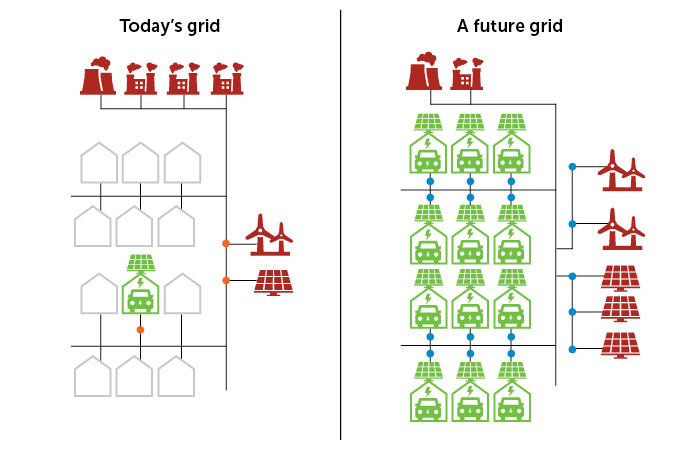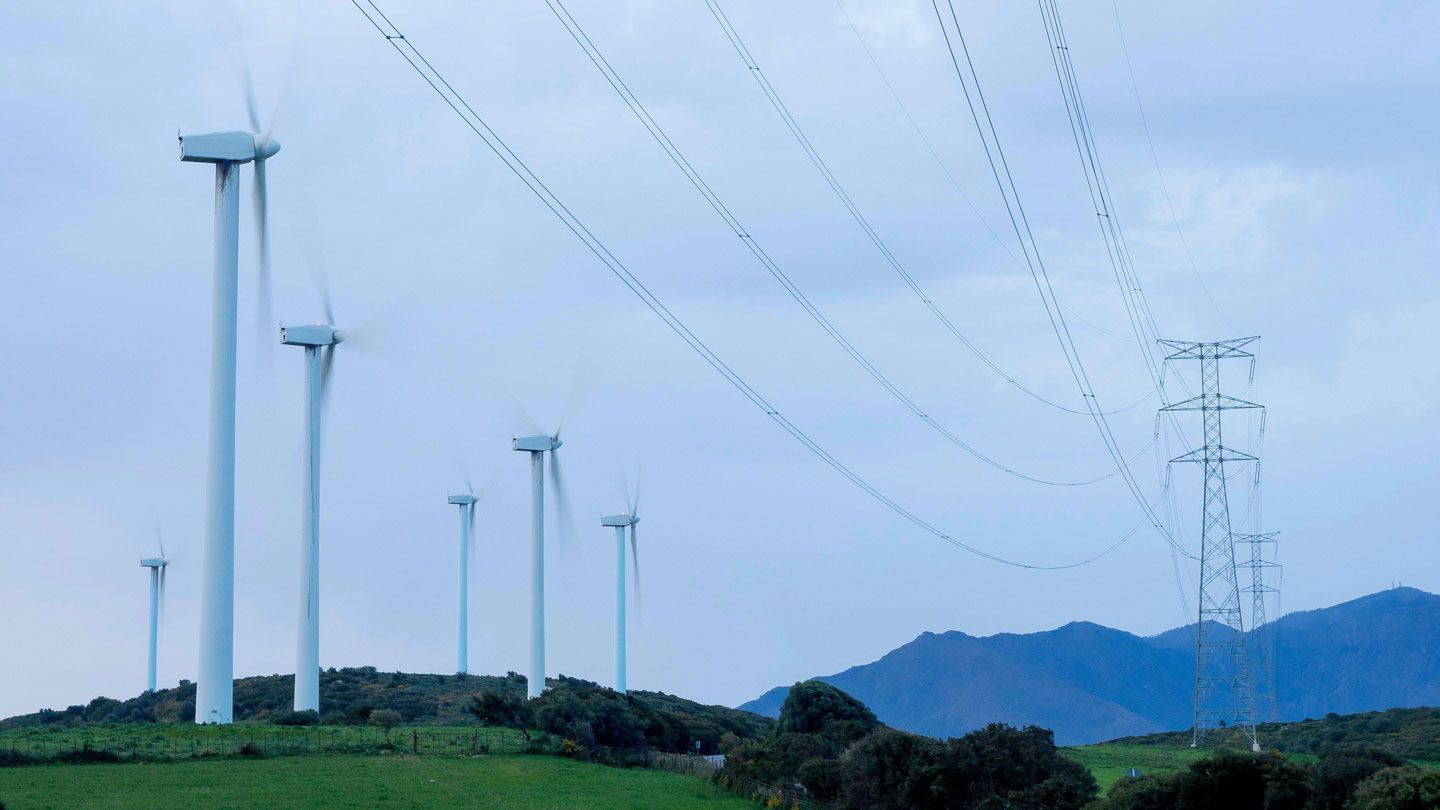Breakthrough: This Game-Changing Device Will Revolutionize Our Power Grid!
Our power grid is undergoing a major transformation as we shift from traditional power sources like coal to renewable energy sources like wind and solar. But as coal-fired power plants retire we face the challenge of maintaining the stability of our electrical grids. That's where a revolutionary device called a grid-forming inverter comes in. In this article we'll explore how these inverters can play a crucial role in integrating more solar and wind energy into our power grid.

Retiring Old Power Plants:
The United States is on track to retire half of its coal-fired power plants by 2026 a significant step towards cleaner energy and combating climate change. However there's an unexpected downside to shutting down these plants. They help maintain the stability of our power grids. When they go offline we need something else to step up and perform that job.
Understanding Electrical Grids:
To understand the importance of grid-forming inverters it's essential to grasp the concept of an electrical grid. It's a complex network involving systems that produce power like nuclear power plants or wind turbines and systems that store and transmit power such as batteries and transmission lines. The grid operates at a standard frequency of 60 hertz which can be disrupted if demand exceeds supply or if a large generator goes offline. Even a small interruption in this frequency can cause ripple effects making it challenging for the grid to recover.
The Role of Large Power Plants:
Large power plants are designed to help the grid be resilient to these ripple effects. The spinning generators in these plants provide inertia buying time in case of unexpected power outages. They also continuously adjust their power output based on the grid's frequency ensuring stability. However renewable energy systems operate differently. They rely on devices known as inverters to convert the direct current (DC) electricity produced by wind and solar facilities into alternating current (AC) electricity for the grid. These systems require a new approach.

Introducing Grid-Forming Inverters:
To maintain grid stability as we retire large power plants researchers have been exploring grid-forming inverters. These pieces of electrical equipment range in size from small to large and are specially programmed to work at the interface between power producers or storage systems (like wind turbines solar panels and batteries) and the grid. Crucially they can control the flow of renewable energy into the grid quickly and responsively emulating the control provided by large power plants.
Benefits of Grid-Forming Inverters:
By incorporating grid-forming inverters into our existing power grid engineers can replace the functions lost when big power plants retire. However these inverters offer even more advantages. They can automatically restart a grid that has gone offline making society more resilient to power outages caused by extreme weather events linked to climate change such as heatwaves and hurricanes. This technology is rapidly expanding around the world as renewable energy becomes more prevalent.
The Function of Grid-Forming Inverters:
Think of a grid-forming inverter as a mother duck leading a group of baby ducklings. The grid-forming inverter injects voltage into the grid and adjusts its frequency based on the power flowing through the system. Other sources of electricity connected to the grid the "baby ducklings" synchronize with the grid-forming inverter ensuring stability. Major manufacturers like General Electric Siemens Tesla and Hitachi already produce these devices and their use is increasing globally as more renewable energy is generated.
Building a Robust Grid:
According to Julia Matevosyan chief engineer at the Energy Systems Integration Group incorporating grid-forming capabilities into renewable energy systems is an essential first step in creating a robust grid for the future. This technology allows for the seamless integration of renewable energy sources paving the way for a future grid that relies primarily on clean energy. Imagine a world where every home has solar panels and electric vehicles can not only draw energy from the grid but also feed excess energy back into it.
A Solution to Grid Stability:
Grid-forming inverters offer a promising solution to the challenge of maintaining grid stability during the transition to renewable energy. These devices can provide the necessary voltage and frequency control to ensure a well-functioning power grid. When a large power plant goes offline grid-forming inverters can step in and quickly respond to changes in power supply and demand. They balance the electrical load and maintain the grid frequency within the desired range.
Grid-Forming Inverters in Action:

To fully comprehend how grid-forming inverters work let's consider a scenario where a large power plant goes offline during a period of high electricity demand. In this situation grid-forming inverters connected to renewable energy sources such as wind turbines and solar panels take charge. They inject power into the grid while keeping the system frequency stable. This seamless transition ensures that consumers continue to receive a reliable electricity supply without disruptions.
Synchronizing with the Grid:
The synchronization between grid-forming inverters and the power grid is a critical aspect of their operation. When multiple inverters are interconnected they must work together harmoniously to maintain stability. Grid-forming inverters use advanced control algorithms and communication systems to share information and coordinate their actions. This synchronization allows for a smooth flow of power preventing any fluctuations or interruptions in the grid's functioning.
A Step Towards Decentralization:
The integration of grid-forming inverters marks a significant step towards decentralizing our power grids. Traditionally power generation was centralized with a few large power plants supplying electricity to a vast network of consumers. However as we embrace renewable energy from various sources the power generation landscape becomes more distributed. Grid-forming inverters enable individual homes businesses and communities to generate their own electricity and contribute to the grid while maintaining stability.
Enhancing Grid Resilience:
One of the most compelling features of grid-forming inverters is their ability to enhance the resilience of our power grid. Extreme weather events such as hurricanes and heatwaves have become more frequent and intense due to climate change. These events often lead to power outages leaving communities without electricity for extended periods. Grid-forming inverters can automatically restart the grid after an outage minimizing the disruption and allowing for a quicker recovery.
The Global Transition to Grid-Forming Inverters:
The adoption of grid-forming inverters is gaining momentum worldwide as countries recognize the importance of renewable energy and grid stability. In Europe several countries are implementing regulations to mandate the use of grid-forming inverters in new renewable energy installations. Germany known for its strong renewable energy sector has implemented grid codes requiring renewable energy systems to have grid-forming capabilities. Other countries including Japan and Australia are also embracing this technology.
Challenges and Future Developments:
While grid-forming inverters hold great promise there are a few challenges that need to be addressed. One significant challenge is ensuring compatibility between different manufacturers' inverters and maintaining interoperability across the grid. Standardization and harmonization efforts are underway to establish universal protocols and communication interfaces. Additionally ongoing research focuses on improving the efficiency and reliability of grid-forming inverters to maximize their potential.
Grid-forming inverters are poised to revolutionize our power grid as we transition to a future powered by renewable energy. These devices enable the seamless integration of solar and wind energy replacing the stability functions once provided by large power plants. By injecting voltage and adjusting frequency grid-forming inverters ensure a reliable and resilient power supply. As countries around the world embrace this technology we move closer to a decentralized clean energy future that benefits both the environment and society. The potential of grid-forming inverters to transform our power grid is indeed electrifying.










